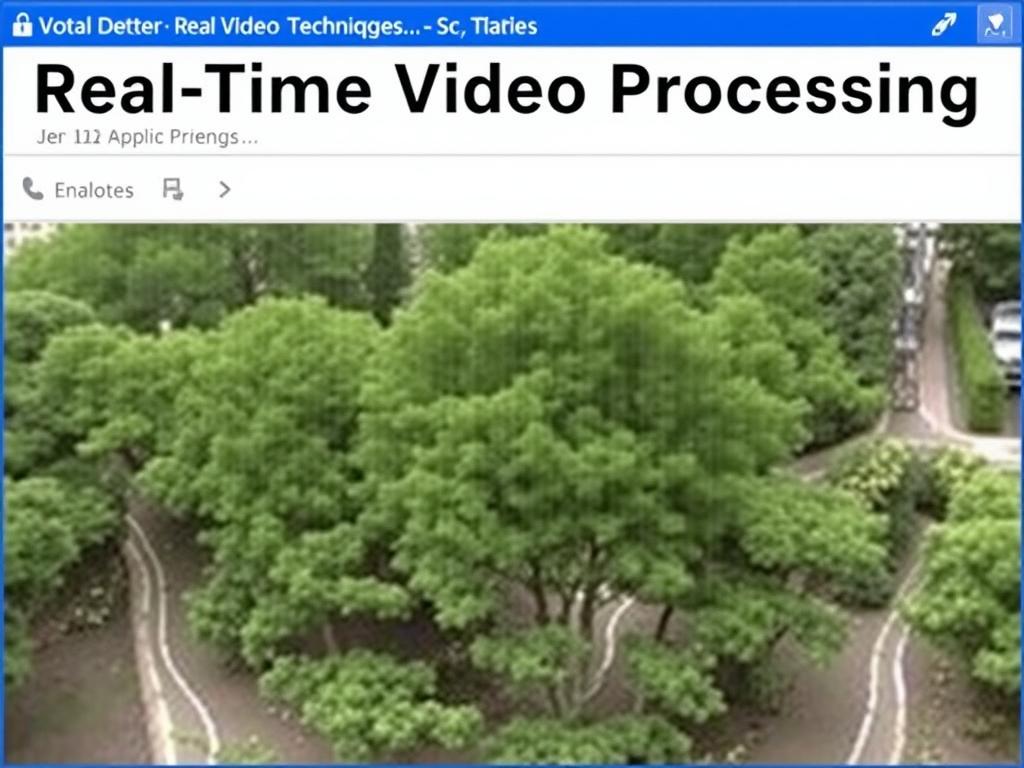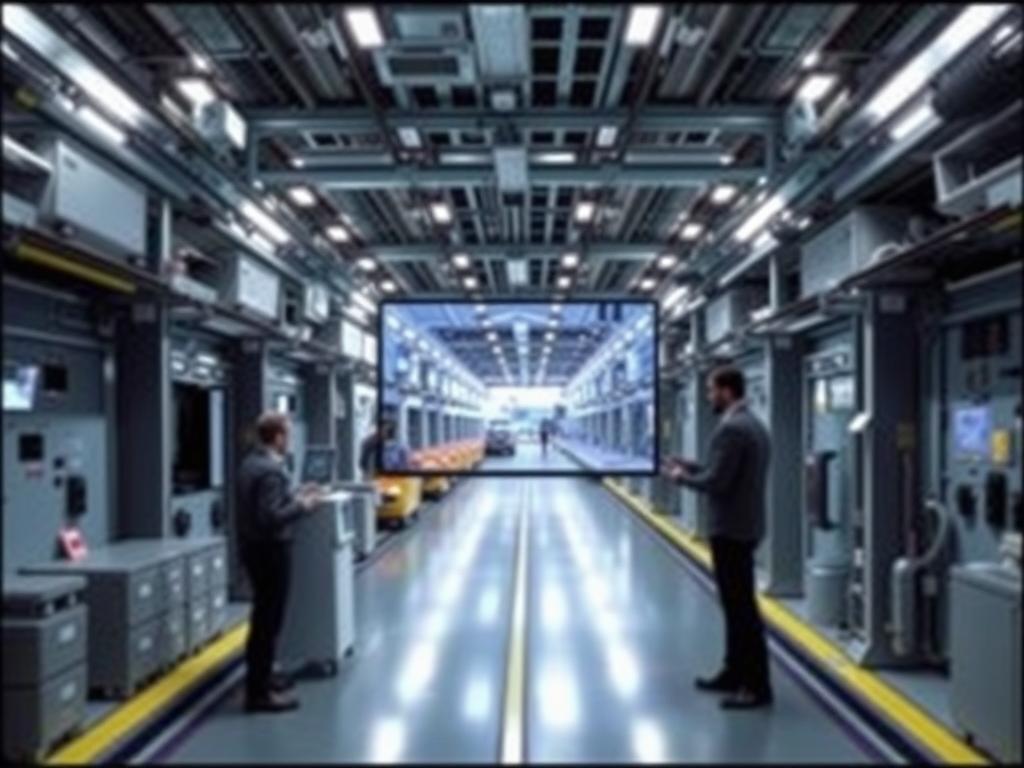In today’s digital age, real-time video processing has become a fascinating area filled with innovation and practical applications. From live streaming to augmented reality, the ability to analyze and manipulate video frames as they are captured is transforming industries. But what exactly is real-time video processing, and how does it work? This article breaks down the core techniques, walks you through various applications, and shows why this technology is crucial in modern multimedia solutions.
What is Real-Time Video Processing?
Real-time video processing refers to the technology and algorithms used to analyze, modify, and render video content instantly — as it streams or plays back. Unlike offline video processing, where the video is first recorded and then edited, real-time video processing happens on the fly. It demands that every frame be handled quickly enough to maintain smooth playback and interaction.
This immediacy introduces unique challenges in computational speed and resource management, making efficient techniques and powerful hardware essential. In many cases, the goal is to either enhance the visual content or extract useful information immediately for further decision-making.
Core Techniques in Real-Time Video Processing
Various methods and algorithms are employed to enable video processing in real time. Below, we explore key techniques that power this technology:
1. Frame Capture and Buffering
To process video in real time, systems first capture raw frames from a camera or video source. Buffering, or temporarily storing frames, helps manage data flow and synchronize the analysis and rendering stages. Effective buffering strategies reduce latency and prevent frame drops.
2. Motion Detection and Tracking
Motion detection algorithms identify moving objects by comparing consecutive frames. Techniques such as background subtraction or optical flow analyze the differences in pixel intensity to detect motion. Once detected, tracking algorithms follow the object’s path across frames for applications like surveillance or gesture recognition.
3. Filtering and Enhancement

Real-time video often requires improving image quality via filters. Noise reduction, sharpening, and color correction are common enhancements. Filters like Gaussian blur or median filtering smooth the image, while edge detection highlights boundaries for better object recognition.
4. Feature Extraction and Object Recognition
To understand what appears in the video, real-time processing uses feature extraction techniques that identify shapes, edges, or textures. Machine learning models, especially convolutional neural networks (CNNs), have revolutionized object recognition by offering highly accurate detection even in complex scenes.
5. Compression and Streaming
For broadcasting or transmitting video, real-time compression algorithms like H.264 or HEVC are applied. These reduce the file size without significant quality loss, enabling smooth streaming over limited bandwidth connections.
Applications of Real-Time Video Processing
The versatility of real-time video processing has inspired a broad array of applications across industries. Here’s a breakdown by sector:
Entertainment and Media
Live video streaming platforms rely heavily on real-time processing to deliver content with minimal delay. Augmented Reality (AR) apps use these techniques to overlay virtual graphics over live camera views, enabling immersive gaming and interactive experiences. Furthermore, video conferencing tools enhance video quality and add effects on the fly, improving communication.
Security and Surveillance
Security cameras use motion detection and facial recognition to monitor premises continuously. Alerts can be generated instantly when unusual movement or suspicious individuals are detected, increasing responsiveness. This sector benefits immensely from real-time video analytics to prevent crimes and ensure safety.
Healthcare and Medical Imaging
In medical diagnostics, real-time video processing helps monitor patients through live video feeds, track surgical instruments during operations, and analyze diagnostic imaging. For example, endoscopy procedures utilize real-time video enhancement to aid doctors in detecting abnormalities.
Automotive Industry
Advanced Driver Assistance Systems (ADAS) employ cameras with real-time video processing to detect obstacles, lane markings, and traffic signs. This technology is a critical building block for autonomous vehicles, enhancing road safety by providing instant feedback and control decisions.
Industrial Automation

Manufacturing plants increasingly adopt real-time video inspection to ensure quality control by detecting defects and monitoring assembly lines. Robotics use video feedback to adapt in dynamic environments, improving precision and efficiency.
Hardware and Software: Enablers of Real-Time Video Processing
To manage the computational demands of real-time video, specialized hardware and software frameworks are necessary. Here is a comparative look at some popular options:
| Hardware | Strengths | Common Uses |
|---|---|---|
| GPUs (Graphics Processing Units) | Parallel processing for high-speed computations | Deep learning, real-time rendering, video filters |
| FPGAs (Field Programmable Gate Arrays) | Low latency, customizable logic for efficiency | Embedded systems, surveillance cameras |
| CPUs (Central Processing Units) | Flexible and easy to program but limited parallelism | General-purpose applications, prototyping |
On the software side, frameworks such as OpenCV provide versatile tools for real-time video processing, supporting everything from basic image manipulation to advanced machine learning models. Additionally, platforms like TensorFlow and PyTorch are frequently used for developing real-time object detection and recognition algorithms.
Challenges in Real-Time Video Processing
Despite its promise, real-time video processing still faces hurdles:
- Latency: Minimizing delay between capture and output is critical to maintain interactivity and user experience.
- Computational Load: Processing high-resolution videos at high frame rates demands significant hardware resources.
- Power Consumption: Embedded and mobile devices must balance performance against battery life.
- Data Bandwidth: Real-time streaming over networks requires efficient compression and error handling.
- Environmental Factors: Variations in light, weather, and motion can degrade video quality and complicate analysis.
Researchers continue to innovate by developing more efficient algorithms and harnessing AI to tackle these challenges. Hardware advances, such as specialized AI accelerators, also contribute to overcoming current limitations.
Future Trends in Real-Time Video Processing
The future holds exciting possibilities as real-time video processing evolves. One trend is the integration of AI and edge computing, where analysis happens closer to the data source to reduce latency. This is particularly important for autonomous vehicles and smart city surveillance.
Another promising development is improved 3D video processing and volumetric capture, enhancing virtual and augmented reality experiences. The rise of 5G networks will further enable high-quality real-time video streaming with minimal delay.
Moreover, real-time video processing will become more accessible, with frameworks and hardware becoming easier to use and more affordable, allowing smaller businesses and developers to harness its power.
Summary of Techniques and Applications
| Technique | Purpose | Example Application |
|---|---|---|
| Motion Detection | Identify moving objects in video frames | Intrusion detection in security cameras |
| Filtering & Enhancement | Improve visual quality and reduce noise | Live video broadcast quality enhancement |
| Feature Extraction | Detect and recognize objects or patterns | Facial recognition for user authentication |
| Compression | Reduce bandwidth for streaming | Video conferencing and live sports streaming |
Conclusion

Real-time video processing is a dynamic and integral part of modern technology that touches many aspects of our lives, from entertainment and security to healthcare and transportation. Understanding the fundamental techniques behind it reveals the complexity and ingenuity required to analyze and manipulate video instantaneously. As hardware and software capabilities continue to advance, real-time video processing will become even more powerful and pervasive, transforming how we interact with visual media and enabling new innovative applications that were once only imagined. Whether you’re a developer, a business professional, or simply a curious mind, keeping an eye on this field offers fascinating insights into the future of digital communication and interaction.